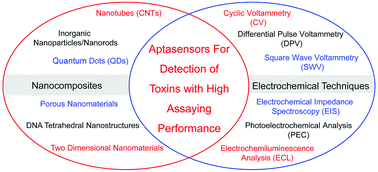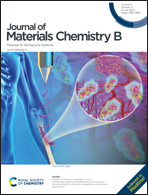Recent advances in nanocomposite-based electrochemical aptasensors for the detection of toxins
Abstract
Toxins are one of the major threatening factors to human and animal health, as well as economic growth. There is therefore an urgent demand from various communities to develop novel analytical methods for the sensitive detection of toxins in complex matrixes. Among the as-developed toxin detection strategies, nanocomposite-based aptamer sensors (termed as aptasensors) show tremendous potential for combating toxin pollution; in particular electrochemical (EC) aptasensors have received significant attention because of their unique advantages, including simplicity, rapidness, high sensitivity, low cost and suitability for field-testing. This paper reviewed the recently published approaches for the development of nanocomposite-/nanomaterial-based EC aptasensors for the detection of toxins with high assaying performance, and their potential applications in environmental monitoring, clinical diagnostics, and food safety control by summarizing the detection of different types of toxins, including fungal mycotoxins, algal toxins and bacterial enterotoxins. The effects of nanocomposite properties on the detection performance of EC aptasensors have been fully addressed for supplying readers with a comprehensive understanding of their improvement. The current technical challenges and future prospects of this subject have also been discussed.

- This article is part of the themed collection: Journal of Materials Chemistry B Recent Review Articles


 Please wait while we load your content...
Please wait while we load your content...